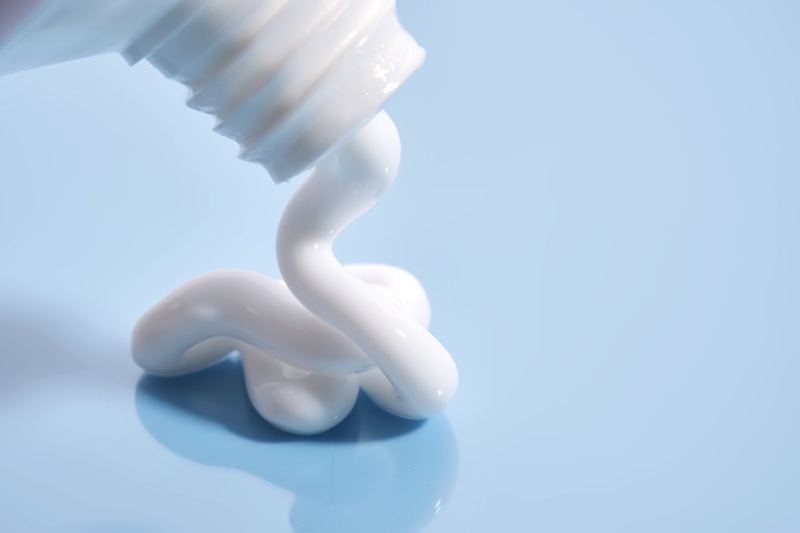The Power of Fluoride in Preventive Dentistry

Fluoride has long been a topic of debate in dental care. Some claim it’s toxic, while others swear by its benefits in preventative dentistry. But what really is the truth?
Our experienced and qualified dentists at Whitehorse Dental are here to set the record straight. As professionals in the dental field, we stand strong with how fluoride can help maintain strong, healthy teeth and prevent decay. However, we also understand how many people steer clear of fluoride for their teeth.
Let’s explore the power of fluorides in preventive dentistry work, why they’re beneficial, and how they’re used to protect your smile.
What is Fluoride, and How Was It Discovered?
Fluoride is a mineral not only found in toothpaste—it is a naturally occurring mineral found in soil, water, and certain foods. It was first recognised for its dental benefits when researchers noticed that certain populations had significantly lower rates of tooth decay.
Further investigation revealed that these communities drank water with naturally occurring fluoride, which made their teeth more resistant to cavities. This discovery led to the introduction of fluoride into public water supplies and dental care products as a means to prevent tooth decay and improve oral health.
Beaconsfield, Tasmania, was the first place in Australia that have its public water fluoridated in 1953. Eventually, other states and towns in Australia implemented fluoridation at various times, occurring in the 1960s and 1970s.
How Does Fluoride Strengthen Teeth?
To understand how fluoride on teeth benefits dental health, we need to look at the structure of tooth enamel. Enamel comprises tiny crystals made of calcium and phosphate arranged in a strong yet porous structure. Throughout the day, acids from food and bacteria break down these minerals in a process called demineralisation, which makes the teeth vulnerable to decay.
Fluoride helps counteract this by:
- Rebuilding weakened enamel through remineralisation.
- Filling in microscopic gaps in the crystalline structure of teeth. Because fluoride works as an ion, it can easily fill in the gaps in the structure of the enamel, which makes the teeth harder and more resistant to acid attacks.
- Slowing down the growth of bacteria responsible for tooth decay.
Essentially, fluoride sticks into the enamel structure, forming a stronger, more decay-resistant surface. This process is particularly effective when fluoride is applied directly to the teeth, through fluoridated water, toothpaste, and professional treatments.
Let’s take a look at the role of fluoride in preventive dentistry.
The Role of Fluoride in Preventative Dentistry
Fluorides in preventive dentistry work by consistently exposing teeth to low levels of fluoride, which then helps strengthen enamel and prevent cavities. In today’s modernised world, water is not the only thing that consists of fluoride anymore.
Here are several ways fluoride can be used in dentistry to promote oral health:
1. Water Fluoridation
One of the most effective public health measures for reducing tooth decay is water fluoridation. Fluoride is added to public drinking water at an optimal level of around 1 part per million (ppm). This low concentration provides continuous exposure to fluoride on everyone’s teeth, reinforcing the enamel without causing adverse effects. Many studies have shown that communities with fluoridated water experience significantly lower rates of cavities compared to those without.
2. Fluoridated Toothpaste
Brushing with fluoridated toothpaste is one of the easiest and most effective ways to protect teeth. Most toothpastes contain fluoride concentrations ranging from 1,000 to 1,500 ppm, which helps strengthen enamel and prevent cavities. Higher-strength fluoride toothpaste, around 5,000 ppm, may be prescribed by dentists for individuals at higher risk of tooth decay.
Best practices for using fluoridated toothpaste:
- Brush twice a day with a pea-sized amount of fluoride toothpaste.
- Spit out excess toothpaste after brushing, but avoid rinsing immediately or using too much of it to allow fluoride to remain on the teeth longer.
- Supervise young children to ensure they use the right amount of toothpaste and do not swallow it. Kids under 3 years old should only use a smear of fluoridated toothpaste or about the size of a grain of rice. Children above 3 years old can use a pea-sized amount.
3. Professional Fluoride Treatments
Dentists often apply concentrated fluoride gels, foams, or varnishes after a professional cleaning. These treatments contain a higher fluoride concentration than toothpaste and provide an additional layer of protection against cavities. Professional fluoride treatments are particularly beneficial for individuals with:
- A history of frequent cavities.
- Weak or sensitive enamel.
- Dry mouth conditions that reduce natural saliva protection.
4. Silver Fluoride for No-Drill Dentistry
A more recent innovation in fluoride use in dentistry is silver fluoride, a liquid medication used to halt the progression of tooth decay. At Whitehorse Dental, this silver fluoride is particularly used in our no-drill dentistry treatment, where it is applied directly to decayed areas, killing cavity-causing bacteria while strengthening the softened enamel. However, one drawback is that silver fluoride turns treated areas black, which can be a cosmetic concern.
Because of that, we highly recommend no-drill dentistry to young kids who haven’t grown out their permanent teeth yet, and older adults who cannot stand to sit for a long time on the dental chair.
Can Fluoride Be Harmful?
The safety of fluoride has been a subject of debate, with concerns about its potential toxicity. However, extensive research has shown that fluoride is safe and effective when used at appropriate levels. The key is dosage.
- Too little fluoride: Teeth remain vulnerable to decay and demineralisation. That means your teeth can be prone to decay.
- Too much fluoride: Can lead to fluorosis, a cosmetic condition that causes white or brown spots on the enamel. Fluorosis occurs when fluoride intake exceeds recommended levels during tooth development, typically in young children.
- Optimal fluoride levels: Strengthen enamel without causing adverse effects.
Regulatory bodies worldwide, including the Australian Dental Association (ADA) and the World Health Organization (WHO), endorse fluoride use in dentistry as a safe and effective means of cavity prevention.
How to Maximise the Benefits of Fluoride
To get the most out of fluoride while minimising risks, follow these best practices:
- Drink fluoridated water if available in your area.
- Use fluoridated toothpaste and brush properly.
- Visit your dentist regularly for fluoride treatments and professional cleanings.
- Avoid excessive fluoride intake in young children to prevent fluorosis.
- Consider silver fluoride treatments if you have developing cavities.
Protect Your Smile with Fluoride
Now that we already know the power of fluoride, we can see how it plays a critical role in preventative dentistry, offering an effective way to strengthen teeth and protect against cavities. Despite myths and misconceptions, fluoride is a naturally occurring element that, when used correctly, provides significant benefits for oral health.
If you’re unsure about your fluoride intake or need guidance on maintaining strong, cavity-free teeth, our team at Whitehorse Dental is here to help. Let our team help you prevent the worst oral problems with our preventive dentistry services, including check-ups, nightguards, mouthguards, and oral appliances.
Schedule your appointment today to discuss the best treatments for you and your family!


